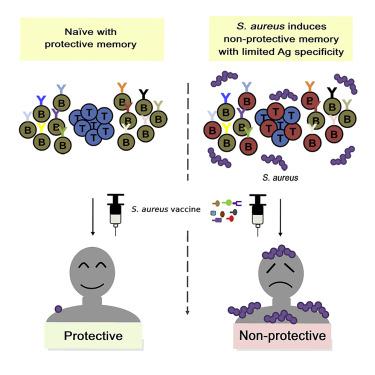Cell Chemical Biology ( IF 6.6 ) Pub Date : 2022-05-19 , DOI: 10.1016/j.chembiol.2022.04.003 Chih-Ming Tsai 1 , Irshad A Hajam 1 , J R Caldera 2 , George Y Liu 3

|
Staphylococcus aureus (SA) is a leading cause of bacterial infection and antibiotic resistance globally. Therefore, development of an effective vaccine has been a major goal of the SA field for the past decades. With the wealth of understanding of pathogenesis, the failure of all SA vaccine trials has been a surprise. We argue that experimental SA vaccines have not worked because vaccines have been studied in naive laboratory animals, whereas clinical vaccine efficacy is tested in immune environments reprogrammed by SA. Here, we review the failed SA vaccines that have seemingly defied all principles of vaccinology. We describe major SA evasion strategies and suggest that they reshape the immune environment in a way that makes vaccines prone to failures. We propose that appropriate integration of concepts of host-pathogen interaction into vaccine study designs could lead to insight critical for the development of an effective SA vaccine.
中文翻译:

将复杂的宿主-病原体免疫环境整合到金黄色葡萄球菌疫苗研究中
金黄色葡萄球菌(SA) 是全球细菌感染和抗生素耐药性的主要原因。因此,在过去的几十年里,开发有效的疫苗一直是 SA 领域的主要目标。随着对发病机制的深入了解,所有 SA 疫苗试验的失败令人惊讶。我们认为实验性 SA 疫苗没有起作用,因为疫苗是在幼稚的实验室动物中研究的,而临床疫苗的功效是在 SA 重新编程的免疫环境中测试的。在这里,我们回顾了似乎违反所有疫苗学原理的失败 SA 疫苗。我们描述了主要的 SA 逃避策略,并建议它们以一种使疫苗容易失败的方式重塑免疫环境。











































 京公网安备 11010802027423号
京公网安备 11010802027423号